 |
||
|
||
| ||
Microsoft Intentionally Cripples HD DVD, Blu-ray Support in Vista 32-bit Toshiba Set To Launch Ultra High Speed SD Memory Cards Logitech Introduces Revolution Mice Canon's EOS Digital Rebel XTi / EOS 400D DIGITAL To Be Available In September ASUS Introduces R2H Ultra-Mobile PC Standard Performance Evaluation Corporation (SPEC) announced the new long-anticipated performance benchmarking suite SPEC CPU2006 that will replace the old CPU2000. The new version is expected to completely replace the old one within 6 months. Performance results from SPEC CPU2006 cannot be compared to those from CPU2000, since new benchmarks have been added and existing ones changed. CPU2006 combines a number of benchmarks for separate components and system as a whole. It works under Microsoft Windows and Unix/Linux. CPU2006 features two sets: CINT2006 (SPECint2006) and CFP2006 (SPECfp2006) dedicated to integer and floating-point performance respectively. CINT2006 gathers 12 application-based benchmarks written in C and C++, while CFP2006 features 17 CPU-intensive benchmarks written in C, C++, Fortran, and a mixture of C and Fortran. SPEC CPU2006 benchmark compares performance of a given system with performance of a reference system which is Sun Ultra Enterprise 2 based on 296 MHz UltraSparc II CPU. All benchmark results are computed as ratios against the reference machine, so bigger scores are better. An initial set of 70 SPEC CPU2006 results based on testing from nine different SPEC member companies are available at the SPEC web site. CPU2006 is already available on DVD for $800. For $400 you can upgrade your SPEC CPU2000. For educational organizations the suite will cost $200. Source: SPEC
Microsoft Intentionally Cripples HD DVD, Blu-ray Support in Vista 32-bit According to DailyTech, If any of you out there were planning on adding a Blu-ray or HD DVD drive to your PC in the near future to playback high-definition content on your PC, you're going to be out of luck with a 32-bit processor and the upcoming 32-bit version of Windows Vista. Microsoft Senior Program Manager Steve Riley made the announcement today during Tech.Ed 2006 in Sydney Australia. “Any next-generation high definition content will not play in x32 at all. This is a decision that the Media Player folks made because there are just too many ways right now for unsigned kernel mode code [to compromise content protection]. The media companies asked us to do this and said they don’t want any of their high definition content to play in x32 at all, because of all of the unsigned malware that runs in kernel mode can get around content protection, so we had to do this,” said Riley. In order to playback high definition Blu-ray or HD DVD content, your PC must have a 64-bit processor and a 64-bit version of Windows Vista. Running a 64-bit version of Vista means that all drivers have to be signed. This ensures that content protection is kept in place and is something that the movie studios have been pushing for to get help stomp out piracy. Although AMD has been pushing 64-bit AMD Athlon 64 and Turion 64 processors for quite some time in the consumer space, it wasn’t until recently that Intel made a large push for 64-bit in the consumer space with the launch of its Core 2 Duo processors for desktop and mobile platforms. Update 08/25/2006: Microsoft PR manager Adam Anderson tells CNET that the original statement made by Riley is partially incorrect and, "It is up to the ISVs providing playback solutions to determine whether the intended playback environment, including environments with a 32-bit CPU, meets the performance requirements to allow high-definition playback while supporting the guidelines set forth by the content owners. No version of Windows Vista will make a determination as to whether any given piece of content should play back or not." However, even Anderson is not correcting Riley's statement that WMP11 will not play Blu-ray or HD DVD content. Instead he claims support will come from 3rd party vendors like Cyberlink. Source: DailyTech
Toshiba Set To Launch Ultra High Speed SD Memory Cards Toshiba Corporation announced that it would launch two new series of SD Cards offering high level data transfer rates and read-write performance. The "high-speed series" will offer a maximum data transfer rate of 5MB/sec, while the "ultra high-speed series" will push transfer rates to as high as 20MB/sec. Both series will be rolled out this autumn; initially in Japan in October, and globally in November. In May this year, the SD Card Association introduced the SD Speed Class, defining three minimum data transfer rates for next generation SD Cards: Class 2 supports a minimum data transfer rate of 2MB a second; Class 4 supports 4MB a second; and Class 6 6MB a second. 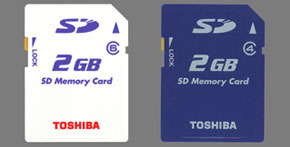 Both the high-speed series Speed Class 4 SD Cards and ultra high-speed series Speed Class 6 SD Cards will be made available in 512MB, 1GB and 2GB capacities. The SD Speed Class will be clearly stated on the card and its packaging, allowing users to select the card that makers specify for use with their digital products. Applications will include video recording with high performance digital cameras. The new SD memory card series will be exhibited at the IFA 2006, the world's largest consumer electronics trade fair, which will be held at Berlin, Germany, from September 1 to 6, 2006. Source: Toshiba Corporation
Logitech Introduces Revolution Mice Logitech announced two advanced re-designed mice of Revolution series - the Logitech MX Revolution cordless laser mouse and the Logitech VX Revolution cordless laser mouse for notebooks. Both mice feature hyper-fast scrolling with a revolutionary alloy wheel — the MicroGear Precision Scroll Wheel — that spins freely for up to seven seconds, spanning hundreds of pages with a single flick of the finger. Computer navigation with these mice is also enhanced with an innovative One-Touch Search feature that allows people to select a word or phrase on a Web page or in a document and, with a single click, view Internet search results on that subject. And with their ergonomic designs, the new mice offer a level of comfort that is almost forgettable — they become a nearly imperceptible extension of the hand. 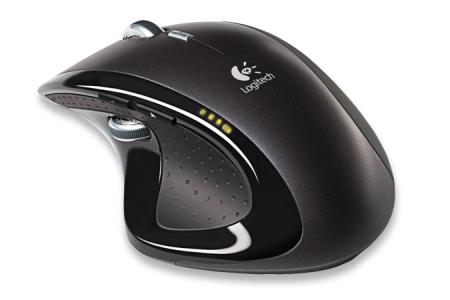 According to a recent Logitech study, people, on average, have six applications open on their computer at any one time, and the active window switches or a new window opens every 50 seconds. To navigate the vast content at their disposal, people spin their mouse's scroll wheel approximately 26 feet in an eight-hour day. The MicroGear Precision Scroll Wheel helps ease this navigational challenge in two different ways. Its free-spin mode takes people through long documents as quickly as they want. A single flick of the finger yields as many as 10,000 lines of a Microsoft Excel document in seven seconds — with a traditional scroll wheel, it would take 500 spins and seven minutes to cover the same territory. The new wheel also offers an improved click-to-click scrolling option that results in familiar tactile feedback for each small unit of distance scrolled, allowing people to precisely navigate lists, slides and individual images. Both mice feature low-resistance polytetrafluoroethylene feet, enabling them to glide smoothly across a surface with minimal exertion on the part of the user. And the MicroGear wheel includes an inset rubber belt that makes it easier for the index finger to grab and flick the finely tuned wheel. The Logitech MX Revolution mouse includes an intelligent twist to the MicroGear Precision Scroll Wheel: The motorized wheel automatically switches between free-spin mode and click-to-click mode, with Logitech'ss SmartShift technology, based on the best setting for the application being used. In some applications, such as Microsoft Excel, Logitech's technology also senses the speed at which people spin the wheel — if spun rapidly, the wheel goes into free-spin mode; if spun slowly, the wheel shifts into click-to-click mode. People can also toggle manually between modes — by pushing down and clicking the wheel. And settings for the wheel and for all of the mouse's seven buttons can be customized for individual preferences within the included Logitech SetPoint software or with Logitech Control Center software for Mac, available via download. The MX Revolution also features a second wheel near the thumb that can either be used to zoom in and out of photos and documents, or to quickly switch between applications. The Logitech MX Revolution mouse has a suggested retail price of $99.99 in the U.S. It is now available in the U.S. and in Europe. In its turn, the Logitech VX Revolution mouse balances portability and comfort. It's smaller in size than the MX Revolution mouse and includes a slot to store the 2.4 GHz micro-receiver, making it more portable. 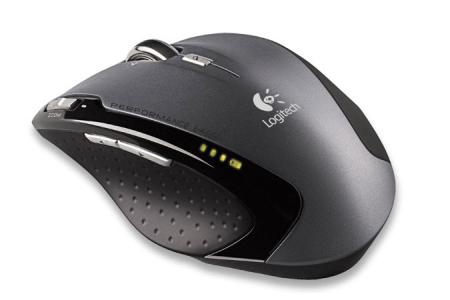 The base of the mouse features a switch that can shift the MicroGear Precision Scroll Wheel from free-spin mode to click-to-click mode. The mouse also includes a zoom slider that makes it easy to zoom in and out of open documents and photos. The Logitech VX Revolution mouse has a suggested retail price of $79.99 in the U.S. It is now available in the U.S. and in Europe. Source: Logitech
Canon's EOS Digital Rebel XTi / EOS 400D DIGITAL To Be Available In September Canon BeBit website was updated with information regarding the new Canon Digital Rebel XTi / EOS 400D digital SLR camera that is to arrive in September 2006. According to that information, the novelty has a newly designed 10.1 MP CMOS sensor, 2.5-inch LCD monitor, the proprietary EOS Integrated Cleaning System and Canon's Picture Style technology. 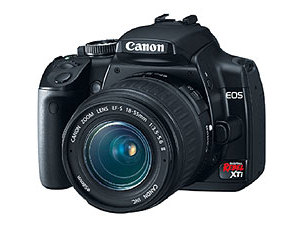 The Self Cleaning Sensor Unit vibrates the low-pass filter to remove dust particles from it. Though cleaning can be manually selected by menu, automatic cleaning by ultrasonic vibration of the LPF is activated for about one second when the power is turned on or off. As shooting priority occurs on start-up, pressing the shutter button disables the self-cleaning operation and returns the camera to shooting mode. Additionally, by targeting image data for leftover dust after cleaning, the Dust Delete Function within the bundled software can be used after shooting to remove dust spots that may remain on the captured image. Speaking of user interface, the camera features new display button ("DISP."), power lamp, Display Off Sensor, and improved information display. Replacing the previous information button, the display button verifies camera setting and shooting data. A new ON/OFF function for the button simplifies operation while saving energy. Another energy-saving feature is the power lamp, which in a glance reveals the startup state, even when the LCD monitor is off. And if monitor glare is annoying when looking through the viewfinder, you'd appreciate the Display Off Sensor. Located under the eyepiece, it detects the approach of your face and turns off the LCD. The camera comes bundled with the EOS DIGITAL Solution disk and applications like Digital Photo Professional (DPP) with Dust Delete Function and Zoom/Image Browser. DPP 2.2 now uses dust delete data of an image to locate specified dust spots and automatically erase. RGB Tone Curve Assist Function has an enhanced high mode. Noise reduction settings are expanded to include JPEG images as well as RAW.  Brief specifications:
The complete specifications can be found here. Source: Canon BeBit
ASUS Introduces R2H Ultra-Mobile PC ASUSTeK Computer Inc. today unveils the latest R2H Ultra-Mobile PC - with 7-inch display, built-in high-resolution webcam, incorporated GPS and biometric fingerprint authentication. Security is also provided by the ASUS Security Protect Management (ASPM) that guards access to the device and network. Users can choose to setup multi-factor authentication requirements for different security levels while enjoying the Single Sign On (SSO) one-time login convenience without compromising security integrity. The R2H runs on Windows XP Tablet PC Edition with Touch Pack software and ergonomic hardware interface designs. With complete function keys laid out on both sides of the front panel, users are offered operation to a full set of control keys, including mouse, scroll buttons, hot keys as well as on-screen keypad. The connectivity functions include Bluetooth 2.0 EDR, WLAN 802.11 a/b/g. 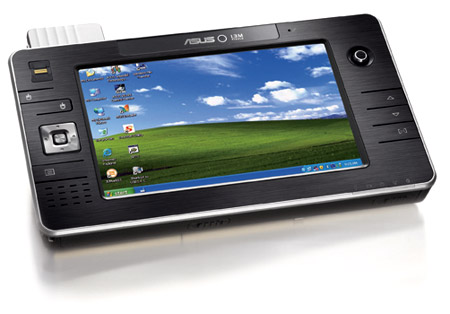 R2H Specifications:
Source: ASUSTeK Computer Inc.
Write a comment below. No registration needed!
|
Platform · Video · Multimedia · Mobile · Other || About us & Privacy policy · Twitter · Facebook Copyright © Byrds Research & Publishing, Ltd., 1997–2011. All rights reserved. |